|

by Jeffrey Mishlove, PhD
The Roots of Consciousness
from
WilliamJames Website
Can psychic powers be used for
detrimental purposes? What are the limits of psychic ability?
Certainly some inferences can be obtained by drawing upon the
history, the literature, and the folk-wisdom of psi. I sometimes use
the term "psionics," taken from the science fiction literature, to
describe the applied branch of psi exploration.
Psionics is not particularly concerned with the truth value of
scientific, pseudoscientific or religious theories about the nature
of psychic functioning. It is concerned with the practical utility
of such theories for individual practitioners. It is concerned with
reliability, consistency and magnitude of psi effects, not in the
laboratory, but in the world of business and professional affairs.
Harmful
Purposes
Many traditions teach that psychic abilities can only be used for
good purposes, for instance healing. Other harmful applications are
said either not to work or to rebound back upon the evil-wisher. Dr.
Louisa E. Rhine, who had made a lifelong study of spontaneous
psychic experiences, took such a stance in responding to the
question of a seventh-grade inquirer:
No Nancy, ESP could not possibly be used to hurt anyone physically
or mentally. It is true that sometimes people get the false idea
that someone is influencing them by ESP. They think it is by
telepathy, but this is very unlikely. Telepathy seldom, if ever,
works that way, for no one can send his thought to another and make
him take it...
The only way a person could be hurt would be
by his belief that he
could be so affected. It is possible sometimes for a person to
"think himself sick" for other reasons and in the same way he could
think himself sick by believing that someone was affecting him by
telepathy. But, if so, his sickness would be caused by mistaken
suggestion, not by telepathy.
Mrs. Rhine’s answer is reassuring and also reflects an understanding
of the psychological mechanisms involved in mediating psi. It seems
quite reasonable to think individuals can reject telepathic
suggestions as easily as you, the reader, might reject any statement
you read in this book. For an aware and enlightened individual this
would certainly be the case. It is also the case that much of what
we think of as psychic phenomena is merely due to suggestion.
The anthropological literature regarding tribal cultures indicates
that the violation of a taboo and the placement of a hex can result
in death within a few days. This has be attributed to an extreme
operation of the stress-response syndrome by modern researchers. We
might consider the reported instances of deaths, illness, and
accidents from hexes, voodoo, spells, and curses to be the result of
suggestion.
Although, we might just as easily ask ourselves whether,
if psi could heal people independently of suggestion, it could not
also be used to harm them. Perhaps psi -- like electricity -- is a
neutral force from a moral perspective? A number of apparent hexes
seem to have occurred without even the knowledge of the victim.
The research of the Soviet physiologist Leonid Vasiliev suggests
that telepathic hypnotic induction may be occasionally instrumental
in effective behavior manipulation over distances. Similar
telepathic experiments have been used to awaken sleeping subjects,
with slightly less success. However, few subjects are so susceptible
and we have yet to understand the mechanisms that differentiate good
and poor subjects.
National
Security Applications
Ancient History and Folklore
The Bible
In the Bible as related in Kings II, vi, the
prophet Elisha used clairvoyant abilities to inform the King of Israel
about the battle plans which the king of Syria had formed
against him. Informed of Elisha’s abilities, the Syrian king
sent a host of chariots and horsemen to capture the prophet.
However, according to the biblical account, Elisha used his
abilities to blind and confuse the Syrians so that they would be
captured by the Israelites.
Similar and even more dramatic tales are told of the exodus of
the Jewish nation from Egypt; of the original Hebrew conquest of
Canaan; and of the subsequent military conquests of Saul, David
and Solomon.
Asian Martial Arts
The earliest treatise on warfare, The Art of
War, written in 500 B.C. by the Chinese general Sun Tzu, details
the intimate link between success in battle and the skilled
management of a "force" which was called ch’i. The basic
principles are elucidated in this amazing document.
Sun Tzu argues that wars are won through a combination of
conventional military tactics and a variety of extraordinary
methods which involve the knowledge and control of ch’i, which
flows through the body of the warrior and can be used to
influence the mind of the enemy to produce illusions, deception
and weakness.
The warrior cultivated ch’i through self-knowledge gained by
following the mystical Taoist traditions. Mental stillness and
other psi-conducive stated enabled the warrior to obtain a poise
and concentration so intense that it was effortless in its
deadly spontaneity. Such training emphasized the ability to
maintain the meditative state in the midst of intense physical
activity. The martial arts trained the warrior to take advantage
of the slightest break in the enemy’s concentration.
Joan of Arc.
A peasant girl with no military training, followed
her visions and voices to lead the bedraggled armies of France
to victory against the English. Many ostensibly miraculous
events -- the subject of continuing historical debate -- led to
the French Dauphin’s appointment of Joan as the titular head of
his army. Joan was burned at the stake in 1431 as a witch. In
1456, an ecclesiastical court proclaimed the iniquity of her
first trial and annulled its judgment. In 1920, she was
canonized as a saint by
the Roman Catholic Church.
The World Wars
In June 1919, in an action against the Hungarian Republic, Czech
soldiers were put into a hypnotic state and asked to
clairvoyantly scan the landscape to determine the enemy’s
strength and position. A pamphlet titled Clairvoyance, Hypnosis
and Magnetic Healing at the Service of the Military, written in
1925 by karl Hejbalik, reports that the information obtained
through these non-normal means always proved correct when later
checked through normal means.
The contemporary Czech
psychotronic researcher Zdenek Rejdak interviewed the
individuals involved in the Czech psi maneuvers. According to
Rejdak, they confirmed Hejbalik’s account "in all details."
The Nazis are said to have assembled many powerful occult adepts
from Tibet and Japan to train and advise them. One of the most
important and powerful groups in Germany was the Nazi Occult
Bureau, which attempted to use occult forces for espionage and
the magical control of events including a conscious, pseudo-Nietzschean
attempt to replace Christianity with the ancient Teutonic myth
of the war god, Wotan. Coincidentally, in the early 1930s, the
great Swiss psychiatrist Carl Jung noticed a marked pattern of
imagery of the war god Wotan in the dreams of his German
patients. The situation was so dramatic that it prompted him to
write, in an essay in 1933, that the German people were
subconsciously preparing themselves for war.
Hitler obtained extensive occult training from the German
nationalistic
Vril Society and the adept circle known as the
Thule Group. Teachings of these groups account for many aspects
of Nazi culture which are inexplicable in terms of ordinary
historical scholarship.
Hitler’s personal psychic abilities, especially clairvoyant and
precognitive visions, were by some accounts instrumental in many
of the dramatic tactical victories during the early period of
the war. Eventually, his intoxication with power and the use of
drugs so poisoned his mind that he compulsively followed
instructions received through visions, and these led to
disastrous strategic errors.
British and American intelligence employed astrologers and
clairvoyants to anticipate the occult advice being given to
Hitler and his forces. According to The Psychic Spy by
Linedecker, the Allies resorted to using a group of out-of-body
practitioners to scout key locations inside enemy territory from
an island in the Atlantic.
Lord Hugh Dowding, head of the Royal Air Force during World War
II, and often called "the man who won the Battle of Britain,"
had experiences during the war which led him later to become a
major figure in the spiritualist movement. Released secret
documents of the British Army reveal that Dowding’s wife was a
sensitive.
Using methods now known among psi researchers as
"remote viewing," she was able to detect enemy air bases that
the army had not discovered through conventional surveillance.
These abilities were coupled with a spiritualistic belief which
so impressed Lord Dowding that he believed himself to be in
contact with spirits of the British airmen who had been downed
in battle.
Another of the great Allied commanders during World War II, U.S.
Army General George S. Patton, reputedly possessed rare psi
abilities. Patton believed himself to be the reincarnation of an
ancient Roman general. General Omar N. Bradley, Patton’s
commanding officer during the war, has confirmed Patton’s
clairvoyant and precognitive abilities, referring to them as his
"sixth sense." Bradley details a wartime example: after crossing
the Moselle River near Coblenz with some three divisions moving
south, Patton suddenly stopped his advance and collected his
forces for no known reason.
Questioned by subordinates about
this strange behavior, Bradley expressed confidence that Patton
had "felt" something that "was not apparent from the information
we had at the time," which justified his action. The following
day, Patton’s forces were hit by a strong and otherwise
unexpected counterattack which the general was able to repel
only because he had earlier stopped to regroup.
Soviet interest in psi was kindled during World War II by a
series of unusual events which transpired between Joseph Stalin
and the well-known Polish psychic, Wolf Messing. By using
telepathic hypnosis to suggest to Stalin’s guards and servants
that he was Lavantri Beria, the head of Soviet secret police,
Messing was reputedly able to walk past them unchecked into
Stalin’s personal dacha and into the very room where Stalin was
working. Stalin’s subsequent tests of Messing’s abilities were
published in the Soviet Journal, Science and Religion.
Eastern Europe
In the 1920s, Professor Lionid Vasiliev, Director of Leningrad
University’s Department of Physiology, initiated a series of
experiments into the effects of mental suggestion at a distance.
Vasiliev was motivated in part by reports of the French
physiologist Pierre Janet, and perhaps also by the extraordinary
power which the monk Rasputin once held over the entire Russian
ruling family.
Vasiliev began by attempting to influence a
hypnotized subject to move his arm, leg, or even a specified
muscle on cue without verbal instructions. Eventually, the
hypnotist achieved success in the experiments with subjects
separated by distances as great as 1700 kilometers (i.e., from
Leningrad to Sebastopol).
Contemporary Soviet interest in remote hypnotic manipulation has
advanced considerably since this early research. Research and
development now continues at the Institute of Cybernetics of the
Ukrainian Academy of Science and the Institute of Psychology of
the Moscow Institute of Control Problems. Experiments are no
longer limited to influencing only trained subjects, but now
also focus on hypnotic influence over untrained and unsuspecting
persons, and occasionally even large groups.
In one Soviet study, reportedly conducted at Kharkov University,
a telepathist is claimed to have been able to stimulate the
brain of a rat for three minutes after clinical death. In
another Soviet study, the psychokineticist Nina Kulagina is
reported to have influenced a frog’s heart to stop beating. In
another Soviet experiment conducted by Professor Veniamin
Pushkin, at the Research Institute of General and Pedagogical
Psychology, the same psi practitioner was reportedly able to
influence the blood volume in the brain of other individuals.
The subjects became so dizzy that they could no longer stand and
had to sit or lie down.
The Soviets have also practiced the strategic application of
telepathic manipulation. Engineer Larissa Vilenskaya, a Soviet
émigré engaged in various forms of psi practice and
investigation, reported on an NBC Brinkley Magazine television
special that researchers recruited gifted subjects for the
purpose of negatively influencing foreign political leaders
while watching them on television.
The Czechoslovakian who pioneered the hypnotic method of
training ESP, Dr. Milan Ryzl, defected to the United States in
1967 when he was made to understand that the Czech government
wished to support his research for military and espionage
purposes. Ryzl has written that secret psi research associated
with state security and defense is going on in the USSR. One
such project was for the purpose of using telepathic hypnosis to
indoctrinate and "reeducate" antisocial elements.
United States
As early as 1952, the U.S. Department of State used
visualization exercises to train its operatives in the use of
intuitive psi faculties. A number of CIA-funded secret reports
are not available through the Freedom of Information Act on
projects incorporating psi research, including Projects Blue
Bird, Artichoke and
MK-ULTRA. One of the goals of each of these
operations was to achieve reliable psi capability in laboratory
subjects.
It was during the Eisenhower administration, according to
knowledgeable sources, that the CIA set up an interagency
committee to follow psi research. This committee has been active
for three decades, and has sponsored a number of international
scientific conferences to which Soviet neurophysiologists and
cyberneticists were invited. Counter-intelligence cases during
this period led the CIA to infer that the Chinese military had
achieved significantly superior mind control abilities --
presumably thanks to training by the Soviet Union.
There were some attempted applications of psi in the U.S.
military during the Vietnam war. U.S. marines were trained to
use dowsing rods to locate land mines during the war. The first
report of such was was by the weekly, The Observer, published
for the U.S. forces in Vietnam in 1967. The report summarized
the situation:
Introduced to the Marines of the 2nd Battalion, 5th Marine
Regiment, the divining rods were greeted with skepticism, but
did locate a few Viet Cong tunnels.
Many reports have emerged from Vietnam of spontaneous ESP
experiences -- often saving the lives of American troops under
jungle guerilla war conditions. One marine sergeant has reported
that entire platoons learned how to sensitize themselves to such
intuitive signals, as a basic survival mechanism.
A significant acceleration of government-sponsored research in
psychic research and related areas occurred during the Nixon
administration. During this period, physicists at
Stanford
Research Institute, now SRI International, received increased
funding from a number of government sources, including NASA for
psychic studies.
They made the claim that select psychics,
including scientologist "clear"
Ingo Swann, Israeli psychic
Uri
Geller, and ex-police chief Pat Price (now deceased) produced
clairvoyantly obtained evidence of remote physical sites (they
called it "remote viewing") with such accuracy that the most
secret reaches of any military installation of the surface of
the Earth -- or Mars for that matter -- were no longer safe from
view.
These experiments persuaded the Office of Naval Research and the
intelligence community to continue supporting the effort. In
1973, according to knowledgeable sources, the CIA and the
National Security Agency (NSA) -- responsible for the codebreaking and
the codemaking efforts of this country arranged a top secret
demonstration of clairvoyance, or "remote viewing," at
SRI.
Swann and Price, given only geographic coordinates, sketched the
target site accurately -- an island in the Indian Ocean. The SRI
research apparently demonstrated that secret military targets,
in the U.S. and overseas, can be described in great detail.
Objects as small as the head of a pin have been described by
remote-viewers over distances of many kilometers. Other
experiments have successfully described military targets, such
as airports, from distances of several thousand kilometers.
From the military’s point of view, such capabilities have clear
application for obtaining otherwise unavailable information
about enemy locations and operations. From the point of view of
the intelligence community, a trained, accurate psi practitioner
would be an ideal agent. He or she could use psi skill to break
secret codes, penetrate guarded military installations and
reveal strategic plans. Another important use of remote viewing
could be for safety inspection of military equipment.
In 1972, according to John Wilhelm writing for the New York
Times (1977), it sent a team of scientists, under the auspices
of DARPA (Defense Advanced Projects Research Agency) to
SRI to
"objectively evaluate" the claims of researchers Russell Targ
and
Harold Puthoff. DARPA was particularly concerned over the
interesting coincidence, if that is what it was, that its
multi-million-dollar computer at SRI went inexplicably haywire
while Uri Geller was attempting psycho kinesis in a nearby lab.
DARPA sent:
-
Ray Hyman, a noted psychologist, magician and
skeptic
-
Robert Van de Castle, a psychologist and expert in
sleep and dream research from the University of Virginia and
also past-President of the Parapsychological Association
-
George Lawrence, a second psychologist/skeptic
The report of
the investigation was negative. Nevertheless, reports that
"remote viewing" replication was underway at Fort Mead, an
important center of the National Security Agency, suggest that
the military and intelligence communities do not take the
certainties of either proponents or skeptics at face value.
Before becoming President, Jimmy Carter reported sighting an
Unidentified Flying Object near his home in Georgia, and, as is
well known, requested a full report of the phenomena upon taking
office.
According to Uri Geller’s report, while living in Mexico he
developed a relationship with the wife of the President of
Mexico, Mrs. Lopez-Portillo, who had a fascination with psychic
phenomena. Researchers at an institute under the direction of
the Mexican President’s sister, Margarita Lopez Portillo,
conducted some investigations of Geller 1977.
President Carter,
during a visit to Mexico, heard of the Mexican interest in psychokinesis and immediately ordered an extensive Defense
Intelligence Agency investigation. A report resulted, titled
Paraphysics Research and Development - Warsaw Pact
(click below image for full report) which was
the third major report on psi research released by the Defense
Intelligence Agency (DIA).
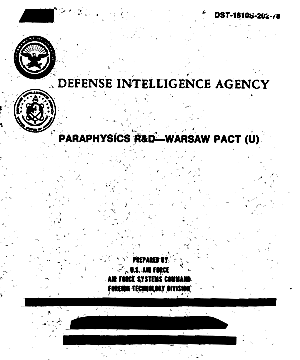
In 1978, a survey of 14 active psi research laboratories by Dr.
Charles Tart revealed that five of those laboratories had been
officially approached by officials or agents of the U.S.
government who were gathering information on psi. The total
known figure, at the time, for funding to mainstream psi
researchers amounted to several hundred thousand dollars a year.
Almost all the researchers surveyed maintained that using psi
for espionage or military purposes was a very real possibility,
and several were certain it was being done.
Probably more than in other areas of scientific investigation,
it is information about who funds psi research research that is
classified, not only what is being done. Former White House
staffer, Barbara Honegger reported, for instance, that the very
word "parapsychology" was classified at the CIA -- that is, a
directive existed that it is not to be used in telephone
conversations except over secure lines; and that any report with
the word in it is automatically classified.
Of all the services, the Navy has historically been the most
open-minded about taking psi research seriously and funding it.
In 1975, the Navy reportedly funded SRI to see if psychics could
detect sources of electromagntic radiation at a distance; and,
in 1976, to see whether they could influence a magnetometer at
Stanford University. The SRI scientists reported that they
could. Critics of this set of results, however, argue that the
project was guilty of "optional stopping" to achieve its
results. The Navy was interested because magnetometers, which
measure magnetic fields, are important in detecting submarines.
The Navy, according to knowledgeable sources, also tested
self-professed psychics to see whether they could accurately
describe maneuvers of a foreign Navy. A New York self-professed
psychic, Shawn Robbins, has reported working with the
intelligence community to track the movements of foreign nuclear
submarines. Robbins was originally tested at the Maimonides
Hospital Psychophysics Laboratory in Brooklyn, New York.
(However, her psi abilities were not determined to be
significant at that time.)
Columnist Jack Anderson claims the navy also funded the
controversial research by polygraph expert, Cleve Backster, on
the alleged ability of plants to detect and respond to unspoken
thoughts and feelings of living organisms, ranging from humans
to brine shrimp. However, according to other sources, it was the
army that funded Backster’s research, in the hopes of "training"
plants to cost-effectively detect intruders in dangerous,
security-sensitive areas.
According to information revealed to Barbara Honegger, during
the Reagan administration for the first time the CIA officer in
charge of keeping abreast of psi research noted in his periodic
report to the National Security Council that there is growing
reason to take the field more seriously.
The fundamental reason for this increased interest is initial
results coming out of laboratories in the United States and
Canada that certain amplitude and frequency combinations of
external electromagnetic radiation in the brainwave frequency
range are capable of bypassing the external sensory mechanisms
of organisms, including humans, and directly stimulating higher
level neuronal structures in the brain.
This electronic
stimulation is known to produce mental changes at a distance,
including hallucinations in various sensory modalities,
particularly auditory. The analogy of these results to some
spontaneous case reports in the psychical research literature
has not escaped notice by the CIA, which is following the
research.
A development during the first months of the Reagan
administration was the release by the House Science and
Technology Subcommittee, chaired by Representative Donald Fuqua,
containing a chapter and supporting appendix on the "Physics of
Consciousness" (mispelled "conscience" in the table of
contents). The report recommends that psi research deserves
serious attention by Congress for potential future funding. It
states that,
"general recognition of the degree of
interconnectedness of minds could have far-reaching social and
political implications for this nation and the world."
The primary sources cited in the report are the research studies
of Harold Puthoff and Russell Targ at SRI International, and a
report prepared by William Gough, Technical Director of the
office of Program Assessment and Integration of the U.S.
Department of Energy. Gough published the cited report under the
auspices of the Foundation for Mind-Being Research.
A statement of U.S. government interest in psi-war scenarios
appeared in the private publication, Military Review, by
Lieutenant Colonel John B. Alexander. Alexander asserted that
psychotronic weapons already exist and that their lethal
capacity has been demonstrated.
He was referring here
predominantly to the claims of Lt. Colonel
Thomas E. Bearden
that third-generation psychotronic weapons, including what he
called a "photonic barrier modulator: which induces
physiological changes at distances, near or far; the
’hyperspatial howitzer,'" which allegedly can transmit nuclear
explosions to distant locations; and a radionics-type device
which, Bearden contended, sank the U.S. nuclear submarine
Thresher in 1963.
Alexander’s claims were unnecessarily alarmist in nature and a
number of them are known to be either exaggerated or erroneous.
He stated, for instance, that research in the Transcendental
Meditation Sidhis Program has produced evidence that individuals
are taught in the program to levitate. Investigations into this
claim have found it unsupported by any valid observations or
measurements.
In 1988, the U.S. Army commissioned a study on a variety of
techniques purporting to enhance human performance.
Accident prevention
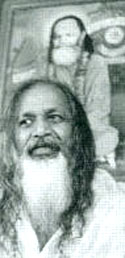
Maharishi Mahesh Yogi
The claim is made with the
Transcendental Meditation (TM) program that the practice of
TM by
many individuals creates an unexplained effect on the "social field"
which results in reduced accidents, foul weather, sickness and crime
-- as measured by statistical social indicators. Although these
claims are presented in a quasi-empirical fashion -- with statistics
and control groups -- they have yet to be seriously presented or
evaluated in the academic literature of either sociology or
psi
research.
The methodological problems inherent in any study
conducted by an organization for the purpose of promoting training
offered by that organization are sufficient to merit skepticism in
the absence of independent replication.
Dowsing
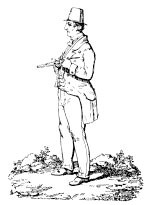
Dowsing, a poorly understood technique
for finding underground water and minerals, seems to be gaining
popularity as a result of increasing need for efficient development
of resources. Some researchers maintain that dowsing involves an
extraordinary sensitivity to anomalies in weak magnetic fields. This
is probably true, but still does not represent the entire picture.
Henry Gross, perhaps America’s best known dowser, has in many
instances been able to locate oil, water, minerals and even lost
people by using only a map. Gross’s abilities were confirmed
somewhat in tests conducted by J. B. Rhine and published in 1950 --
however these laboratory studies were admittedly not related to
dowsing as practiced by Gross in his everyday life. Journalistic
documentation of Gross’s actual work including the prevailing
conditions, the people and areas involved have been published in a
series of books by Kenneth Roberts.
In many instances Gross was apparently successful in pinpointing
wells when conventional geological techniques had failed or had
indicated there was no water. He dowsed water for many industrial
concerns including RCA Victor and Bristol-Myers pharmaceutical
company. He reportedly map-dowsed from Maine fresh water in Bermuda
where none had been found in 300 years. In Kansas he dowsed
thirty-six wildcat oil wells and of the seventeen that were drilled,
it is claimed he was correct in fifteen instances. Seismic
predictions were wrong in nine out of seventeen cases. Although a
strong advocate of Gross’s abilities, Roberts also discusses a
number of his failures.
Henry Gross’s talents were investigated by the New Jersey
psychiatrist and psychical researcher, Dr. Berthold E. Schwarz. His
investigations included psychiatric interviews, physiological
studies and field trips. Schwarz found Gross -- a modest, friendly
game warden -- to be a man of complete honesty.
The physiological
data, as well as direct observation, indicated that Gross expended a
great deal of energy in the dowsing process. In the field studies,
Schwarz claims he observed Gross successfully dowse seven oil wells
in an area where oil was not geologically expected. Gross also
apparently ascertained depth, flow and other quantitative measures
that were presumably beyond the ability of normal sense perception.
At the Laboratory of Physiological Cybernetics at the University of
Leningrad under the directorship of Professor P. I. Gulyaev,
research has been focused on the human ability to perceive faint
electrostatic fields. This research has led to renewed Soviet
interest in a phenomenon known in this country as dowsing, which the
Soviets call the "bio-physical effect." Studies in this area were
initiated by the Soviet geologist N. N. Sochevanov, who has
reportedly documented several dozen cases in which dowsing has been
successfully employed in mining and drilling projects. Dowsing is
also currently taught to professional minerologists and geologists
in the Soviet Union.
Dowsing has reportedly been successful in locating:
-
commercial grade
gold ore near Krasnoyarsk
-
tin deposits in Kirghizia and Tadzhikstan
-
iron in the southern Urals
-
copper-nickel ores near Krasnoyarsk
-
lead and zinc ores in the Tadzhik SSR
-
gypsum in the Ukrainian SSR
Other reports describe finds in unspecified locations of
molybdenum, bismuth, tungsten, bauxite and other economically and
militarily valuable metals.
These findings may, if valid, be strategic importance, given that
the future security of a nation depends on continued access to
mineral resources. Because of this importance, it would be reckless
to overvalue the anecdotal evidence suggestive of dowsing or
other psionic claims. Section III summarizes a body of psychological
research demonstrating many types of cognitive errors to which all
humans -- skeptics and proponents alike -- are susceptible.
A clear
perspective on dowsing (or any other folklore claims) can only be
attained when skeptical arguments are carefully weighed against
claims of proponents.
Treasure
Hunting
One of the most dramatic uses of psychic talent to recover treasure
reportedly occurred here in the United States. The National Inquirer
commissioned the Chicago psychic Olaf Jonsson to assist treasure
hunters in the search for the sunken ruins of Spanish galleons
loaded with gold and silver bullion. Jonsson seemed to sense the
spot as the search vessel approached it and he asked the crew
members to form a circle and concentrate with him. Going into
trance, he actually relived the sinking of the ships. Under his
directions the divers reportedly recovered part of the fortune,
valued at $300,000.
Some psychics have a difficult time, probably for psychological
reasons, using their abilities for their own direct financial
gain-although they perform satisfactorily when they charge others
for "life readings," etc. Even Uri Geller fared very poorly in Las
Vegas. (Although it would be interesting to test habitually
successful gamblers for ESP.) The inabilities seem to be more a
reflection of a person’s personality, rather than a limitation upon psi itself.
Accuracy
of Information Transmission
A number of case histories also testify to this possibility. For
example, Dr. Georgi Lozanov, director of the Institute of Suggestology and Parapsychology in Sophia,
Bulgaria, is said to have
demonstrated a very impressive communications technique using the
majority-vote technique.
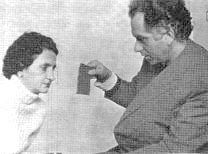
Dr. Georgi Lozanov
with a subject (courtesy Milan Ryzl)
The telepathic receiver sits in front of
two telegraph keys, one for each hand. Some distance away, the
sender telepathically suggests that the receiver press either the
right or left key, according to the beats of a metronome. Each
telepathic suggestion is repeated ten times. The receiver must get
six of these correct for the message to be considered received.
Lozanov reported at the 1966 Parapsychology Conference in Moscow
that phrases and entire sentences have been sent this way with about
70% accuracy. Thousands of such tests are said to have now been
demonstrated before many scientists.
As the name of his institute implies, Lozanov is concerned with many
of the psychological factors effecting ESP scores.
Using techniques derived from yoga, Lozanov combines suggestion and
relaxation in a way that is different from hypnosis in that his
subjects remain in the waking state. Used in education, these
techniques show phenomenal promise to increase language learning,
memory, artistic and musical ability. Lozanov also is applying his
techniques towards the development of mental healing and dermal
vision.
One of Lozanov’s many research activities involves the evaluation of
the predictions made by the blind, peasant woman, Vanga Dimitrova,
who may be the modern world’s first Government supported prophetess.
(In fact, the Institute of Suggestology and Parapsychology, with
over thirty staff members, is supported by the Bulgarian
government.) Studies are reported to have shown that Dimitrova’s
predictive abilities -- particularly strong in terms of finding lost
relatives and friends--are about eighty percent accurate.56
In Prague, Czechoslovakia, things were somewhat different. Dr. Milan Ryzl, a biochemist at the Czech Institute of Biology, had spent
years trying to interest the government in supporting psychic
research -- all with very little success. Undaunted, Ryzl continued
his own studies which involved hypnotic techniques for developing
ESP subjects. After practicing on some 500 individuals, Ryzl claimed
to have found fifty with very strong, testable psi abilities.
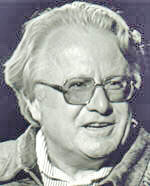
Milan Ryzl
Ryzl used his psychic subjects to
predict the winning numbers in the Czech public lottery. He was
successful for weeks in a row winning the equivalent of several
thousand dollars. However, Ryzl’s psychical research successes also
proved to be detrimental to his safety. The Czechoslovakian regime
became very interested in his work. He found himself constantly
followed by secret agents. His manuscripts were stolen. Eventually
he was asked, in rather forceful terms, to spy on his scientific
colleagues in other countries.
The authorities made it very clear
they were interested in the development of psi techniques for
espionage purposes. The government exercised such control over his
life that Ryzl had no choice but to comply or defect. His escape
from Czechoslovakia was a masterpiece in precise timing. He actually
contrived to leave the country with his entire family in three
automobiles and many valuable possessions including his prized
library. Ironically, Ryzl recalls that the details of his defection
had been predicted for him fifteen years earlier by a psychic who
had been a friend of the family.
Researchers in socialist countries have continued the emphasis on
the practical applications of ESP initiated by scientists such as
Ryzl. Actually, since Ryzl’s defection, western psychical research
has become somewhat more oriented toward practical uses.
Psychic
Archeology
The use of psychics for archeological exploration has probably been
the most extensively explored area of potential psi application. Its
beginnings include the investigation of Glastonbury Abbey, perhaps
England’s old Christian ruin, by Frederick Bligh Bond.
At the University of Toronto, Professor J. N. Emerson of the
department of anthropology has reported on his use of psychic
assistance in doing archeological field work. His friend, a psychic,
George McMullen, has shown extraordinary ability to psychometrize
artifacts and relate accurate details about the history and
circumstances surrounding the object. George has also proven his
usefulness in examining archeological sites before the digging
begins.
Just by walking over a site, he has been able to describe
its age, the people who lived there, their dress, dwellings, economy
and general behavior. He has also provided specific excavation
guidance. Emerson estimated that George’s clairvoyance is 80%
accurate. Furthermore. Emerson has been able to achieve even greater
degrees of accuracy by using teams of several psychics and
evaluating their reports using a majority-vote technique.
In the Soviet Union, techniques of dowsing are applied to
archeology. Chris Bird reports that the Russian anthropologist
Pushnikov has successfully used psychic dowsers to probe the remains
of the Borodino battlefield, seventy miles from Moscow, where the
Russians battled Napoleon in 1812. Other Russian excavations
utilized the talents of dowsers in probing the estate of the
legendary Czar, Boris Gudenov.
The work of the Mobius Society is well known to the general public
and the psychical research community. Stephan Schwartz began by
looking at the role of psi in archeology. In his first book,
The
Secret Vaults of Time, he described a dozen cases in which
archeologists have been successful in uncovering difficult to find
locations and artifacts using psi methods. He then synthesized for
himself a methodology, similar to the intuitive consensus method of
Kautz, which relied on the overlapping judgments of a number of
independent practitioners.
He has successfully used this method in a
number of explorations. One of these, off the California coast on
Santa Catalina Island, was broadcast on television. His explorations
in Egypt have been the subject of several publications and
scientific presentations.
Following guidance obtained from interviews with psychic
respondents, researchers from the Mobius Group; in Los Angeles
initiated an underwater archeological project in the Caribbean Sea.
In September 1987, two respondents, Hella Hammid and Alan Vaughan
were taken out in a small boat and within an hour had agreed on a
site and dropped a buoy. The next morning divers noticed that a
sequence of fire coral when viewed from one angle seemed unnaturally
symmetrical. When one of the fire corals was chipped, it revealed
what was later determined to be a bronze keel bolt.
The buoy dropped
by Vaughan and Hammid was approximately 10 feet from the site. Four
weeks of excavation revealed an unusually intact wreck buried 3 to 5
feet beneath the eel grass and sand. Nothing was visible except the
fire coral covered keel bolts and some ballast mixed with natural
rock. It required substantial excavation to uncover the remains of a
collapsed American armed merchant brig that sank in the early
decades of the nineteenth century.
What are the odds of finding the wreck described by luck? There is
no completely satisfactory statistical answer to this question. The
Mobius researchers justify their approach:
Unlike a laboratory experiment with a known baseline, no absolute
probability can be given in an archeological experiment; fieldwork
applications of psi are inherently different from in-lab
experiments. However, vigorous concurrent utilization of non-psi
electronic location technologies can serve as field controls in a
double or triple blind setting, producing results as significant, in
the author’s view, as low p values.
For example, 85,000 shipwrecks
identical to the one reported here could be fitted into just the
Northern Consensus Zone, and under optimal conditions, it could take
several months of magnetometer survey work to locate one such wreck.
This wreck was psychically located, and the location verified, in
less than five hours.
Critics respond that the Mobius reports do not account for buoys
dropped at other sites where shipwrecks were not located.
Psychic
Police Work
The use of psychics by police for solving crimes goes back many
decades. As early as 1914, the Frenchman W. de Kerler, calling
himself a psycho-criminologist, demonstrated on many occasions,
without any reward or publicity, his ability to solve crimes that
baffled police. Some of his many alleged exploits have been
recorded. In 1925, another case of clairvoyant detective work came
to the attention of the German public. In this case, the psychic,
August Drost, was on trial for fraud.
The case resulted from an
incident in which he had attempted, with little success, to help
officials solve a burglary. During the trial, which lasted for
several weeks, much of the testimony pointed toward Drost’s successful ESP crime solving in other cases. He was acquitted and
continued to practice his unorthodox detective work.
Another psychic detective, Janos Kele, worked for years in Hungary
and Germany without ever accepting fees or rewards. His abilities
were tested by Professor Hans Dreisch at Leipzig University who
pronounced him a "classic clairvoyant." He was also successfully
tested by Dr. Karlis Osis, then at Duke University. According to Dr.
Stephen Szimon, a deputy police chief in Hungary, Kele averaged 80
per cent accuracy in the clues he provided for tracing missing
persons.
Today in the United States, a number of police officials have
publicly credited clairvoyants who have helped them with difficult
investigations. One of the most prominent of these seers is Marinus
B. Dykshorn, a Dutchman, whose autobiography is titled, My Passport
Says Clairvoyant. Dykshorn’s career spans three decades and three
continents. He currently resides in the U.S. For his psychic
detective work he has twice been made an associate member of the
Sheriffs Association of North Carolina.
In May, 1971, he received a
commission from Louis B. Nunn, the governor of Kentucky as a
Kentucky colonel, "in consideration of outstanding achievement." Dykshorn’s book contains ten notarized affidavits from individuals
who have received benefit from his clairvoyant abilities. It is
particularly interesting to note in his book the difficulties that
he had getting researchers interested in testing his abilities, well
after his practical successes had been acclaimed.
A psychic who has established lasting relationships with police
authorities is Irene F. Hughes of Chicago.
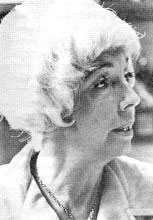
Irene Hughes
She is the head of an organization
called the Golden Path where she has taught classes in psychic
subjects and tests students interested in developing their own
psychic abilities. On the wall of her office, a plaque signed by
three Chicago policemen expresses appreciation for the leads she has
given in solving a number of cases. In one particular homicide case,
Mrs. Hughes was able to provide police with the name and address of
the murderer -- adding that the case would take a long time to
solve. It was, in fact, almost three years before the fugitive was
found. According to crime reporter Paul Tabori, she is credited by
police in Illinois with having helped to solve no less than fifteen
murder cases.
Other tested psychics who are known to have worked with police
officials include Olaf Jonsson and Alex Tanous. Undoubtedly there
are more who prefer to work quietly and without publicity. Police
departments receive a regular stream of tips that allegedly come
from psychic insights. Most of them simply do not prove useful.
Nevertheless, this area deserves further exploration.
Paul Tabori writes of the Viennese Criminological Association
meeting he attended in the early 1930s devoted to the question of
"so-called occult phenomena" in police procedure and judicial
investigation. Many learned academics voiced the opinion that
clairvoyance, telepathy, and even hypnosis were too unreliable to be
used with any advantage in police and judicial work. Equally
insistent however were lawyers and police themselves who stated
practice had proved the value of psi in certain investigations and
that it was foolish to reject it simply because of experimental and
theoretical difficulties.
Great caution must be exercised in evaluating psi claims related to
crime investigation. Skeptical Dutch researcher, Piet Hein Hoebens,
for example was able to find major loopholes in claims regarding the
Dutch clairvoyant Gerard Croiset -- "the Mozart of Psychic Sleuths."
Newspapers throughout Europe acclaimed Croiset as a great psychic,
at the time of his death in July 1980.
This is particularly
disturbing, since Croiset’s abilities were attested to by W. H. C. Tenhaeff, a psi researcher at the University of Utrecht in the
Netherlands, who had studied Croiset’s alleged abilities for several
decades.
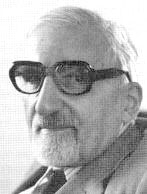
W. H. C. Tenhaeff
Hoebens investigation strongly suggests
either incredibly shoddy research or fraud on the part of Tenhaeff.
With such a history, it is understandably risky for me to report psi
crime investigations with which I am personally acquainted. Yet, for
some years I have been monitoring Kathlyn Rhea, a psi practitioner
now living in Novato, California.
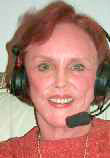
Kathlyn Rhea
Author of Mind Sense and The
Psychic is You, she is well-known for her work with police departments., She
has been active on well over 100 cases.
One case in particular provides evidence that Kathlyn Rhea was
directly instrumental in locating a missing body. I personally
obtained complete corroboration from the law enforcement officials
involved. The case occurred several years ago in Calavaras County,
California, in the foothills of the Sierra Nevada gold country. An
elderly man, Mr. Russell Drummond, has been camping with his wife in
the county. He was reported missing by his wife, after he left his
campsite to use the latrine and never returned.
The local county sheriff organized a search party of some 300
persons. However, after a two-week period of intensive combing
through the adjacent areas, the searchers were unable to locate the
body or any sign of what happened to Mr. Drummond. The sheriff
therefore proclaimed that Drummond must have either left or been
taken away from the county.
His wife was desperate at this point. Not only was she without her
husband, but since his whereabouts was unknown she could not collect
his pension or insurance.
Six months after the incident, Mrs. Drummond contacted Kathlyn Rhea.
Mrs. Rhea sat down using her normal methods, which involved no
profound altered state of consciousness. She simply dictated into a
cassette recorder her impressions of what had happened to Mr.
Drummond. She described in detail, in a tape lasting 45 minutes, how
he lost his sense of orientation and began wandering away from the
campsite in an easterly direction.
She described a gravel path near
a small, chalet-like cottage, where there were trees and brush.
There she described how he had a stroke and fell underneath one of
the brush-like (madrone) trees in that area. She described still
being under that brush, six months later, completely intact. This
would be unusual for a body left in the woods for six months.
Mrs. Drummond took that tape to the new county sheriff, Claude
Ballard, who had been elected during the intervening time. Based on
his listening to the tape, Ballard acknowledged a general sense of
the location described by Mrs. Rhea. He took his skeptical undersheriff with him to that potential site with the idea that if
the location matched the description provided by Mrs. Rhea, he would
then organize a new search party. In fact, her description was so
accurate that Sheriff Ballard was able to walk immediately to the
body and find it without any difficulty. According to undersheriff
Fred Kern, the description provided by the tape cassette was 99
percent accurate.
Another case involving Kathlyn Rhea, which I have personally
verified, involved the murder of an Ohio woman. Rhea was approach by
a local detective for information on this case and she provided him
with a detailed description of where the body could be found -- in
the country, on a gravel road near a bridge.
The case is full of several ironies. Based on this information, the
detective, visited a site where he thought the body might be found
and was not successful. Being somewhat ill and unable to search
further, he provided Kathlyn Rhea’s description to the police.
Simultaneously, some local Boy Scouts uncovered the body at another
location which matched Rhea’s description in major details. The
sheriff’s department, which had assumed jurisdiction over the case,
took note that an accurate description of the body’s condition and
location had been turned in by this detective prior to the body’s
discovery. They detained him as a suspect in the case.
Additional information developed by the detective, working with
Kathlyn Rhea, was that the local police chief had actually committed
this murder. Rhea suggested that fibers from her clothing would be
found in his police cruiser. Acting on this tip, investigators
searched the car and did find fibers.
The police chief was convicted
of the murder and is now serving time in prison.
Journalism and Investigative Reporting
Just as ESP can ostensibly be used in crime investigation, there is
a suggestion that it can be useful to the investigative reporter. At
least one popular account describes such activity.
History
Retrocognition is the apparent psi ability to clairvoyantly see
past events. Many popular claims in this area are made in
connection with ostensible reincarnation. In some instances of
documented xenoglossy, individuals have been able to speak
dialects of languages that have not been spoken for centuries.
The most used application of this ability has been in connection
with psychic archeology, in terms of interpreting the history of
various artifacts through psychometry.
Precognition in Business Management
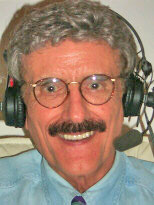
Lee Pulos -- a
clinical psychologist, restauranteur and management trainer.
Skilled in the use of self-hypnosis as a state conducive to
apparent psychic intuition,
Pulos built his Spaghetti Factory business up to a chain of
twenty restaurants
Professors Douglas Dean and
John Mihalsky at the Newark College of Engineering PSl Communications
Project have spent ten years testing the precognitive abilities
of over 5,000 businessmen. They had heard numerous stories of
how fortunes were made by men whose intuitive decisions seemed
to defy all logical considerations. In one series of studies
they looked at company presidents who had doubled their
company’s profits during the last five years.
They found these
individuals scored much higher in the precognitive tests than
other executives. In fact, the ESP test seemed to be a much
better indicator of executive success than other personality
measurements. A number of companies have shown an interest in
using this technique to screen applicants for management
positions.
One of the interesting outcomes of the PSI Communications work
with executives was the high percentage of subjects (about 80%)
who openly acknowledged a belief in ESP. When questioned
further, the businessmen admitted their belief was not based on
either a familiarity with the scientific literature or an
acquaintance with some psychics. These tough-minded individuals
believed in ESP because they had seen it work in their own
lives!
Another major endeavor in the business community is that of
financial investments. Large investment companies typically
spend millions of dollars in market research and investigation.
In spite of all this effort, education and statistical science,
major investment companies not infrequently fail to achieve
results that equal the performance of the overall market.
In 1982, the St. Louis Business Journal conducted a special
event with nineteen prominent stockbrokers and one psi
practitioner, Mrs. Bevy Jaegers.
Each participant was asked to select five stocks whose value
would increase over a six-month period. Mrs. Jaegers, who has no
professional training in corporate analysis, outperformed
eighteen of the nineteen experts. During the test period, the
Dow Jones Industrial Average fell eight percent. Jaeger’s stocks
were up an average of 17.2 percent. The only stockbroker who
bettered her attained an average of 17.4 percent. Sixteen of the
stockbrokers chose stocks that lost their value.
Another psionic organization in the San Francisco Bay Area was
Delphi Associates. This group was formed by
Russell Targ and
Keith Harary after leaving SRI International where they had been
conducting remote viewing experiments, under government
sponsorship, for several years.
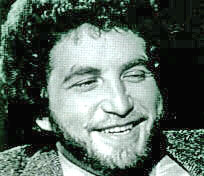
Keith Harary
(courtesy Thinking Allowed Productions)
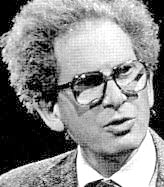
Russell Targ
(courtesy Thinking Allowed Productions)
In a unique pilot study, Harary was
able to predict the movement of silver futures accurately for
nine consecutive weeks. Actually, he did not predict the price
changes directly, rather he was asked to describe an object or
scene that he was to view the following week. The objects were
randomly coded by the investigators to correlate with movements
in the price of silver.
The success of this study, even though
subsequent tests failed to yield the same extraordinary results,
enabled Targ and Harary to financially sustain their continued
business and research activities for a period of time. The
organization has since disbanded -- although not before Targ and
Harary wrote a best-selling book describing their work,
The Mind
Race.
The applied psi activities of Uri Geller has been reported in
business publications and in a biography which Geller
co-authored with Guy Lyon Playfair. Geller, of course, achieved
notoriety for his unusual work as a psychic entertaine. In
retrospect, it’s fair to say that, for better or worse, he
influenced the field of psychokinesis research.
The term "mini-Gellers"
now refers to ostensibly talented macro-PK subjects that have
been reported in over a dozen countries -- generally discovering
their supposed talents after watching Uri Geller perform on
television. However, for well over a decade, Geller has
discontinued his work as a laboratory subject and has entered
the world of psionics. News of Geller’s more recent activities
have surfaced in a national business publication, Forbes
Magazine, in a profile article following up on an earlier story
which appeared in the Wall Street Journal. I will quote some
portions from that article:
Big businesses," he [Geller] says, "are beginning to listen to
people who think they can deliver something with their sixth
sense."
Consider the possibilities? What if some enterprising
outsider were to hire a psychic to abscond with the secrets of
IBM’s new 1000K RAM chip? Or, if a Boone Pickens has the power
to compel a Gulf or Cities Service to bow to the terms of his
latest merger offer? What if he knows what the stock market or
the gold market or the bond market will do in the next week or
next month or next year?
It was Val Duncan, the late chairman of Britain’s Rio Tinto Zinc
Corporation that made him [Geller] see the possibilities that
business could offer. Duncan tested Geller’s ability to find
minerals on Majorca and later put him in touch with the chairman
of South Africa’s Anglo Transvaal Mining Company. The Chairman
spread out a map and said, "Tell me what you feel." Geller said,
"I feel something here." And years later Geller said the company
found coal on the spot.
"That’s when I learned I could do this
for very big companies and profit myself also. For seven years I
have been doing this and nobody knows anything about it."
Several oil companies, for example, hired him to do some
exploration. Acting as a sort of airborne divining rod, Geller
targeted 11 prospects, four of which he says proved out. Geller
doesn’t charge fees, he claims. He relies on people to pay him
what his service is worth. In this case a percentage royalty.
"It’s a little percentage," he says, "but in oil a little is a
lot."
Which companies he has worked for Geller won’t say.
"They do not
want their name to be linked to the psychic, to the paranormal."
His only really public venture to date is his success in
bringing together Japan’s Aoki Corporation and the U.S.
Tishman
Reality in a $500 million hotel, condominium shopping
development near Disney World in Florida. Both John Aoki and
John Tishman were personal friends. But Geller claims to be more
than a mere go-between. "My role is that I predict the success
of the venture." That’s where the power lies in being able to
predict future success.
Public Safety
After a mine disaster in Wales, in which 144 people perished,
researchers collected reports from individuals who claimed to have
had premonitions of the event. Seventy-six reports were received. In
twenty-four cases, the percipient had actually talked to another
person about the premonition before the catastrophe. Twenty-five of
the experiences were in dreams.
A study conducted by W. E. Cox indicates that precognition also
operates on mass-awareness levels. Cox accumulated statistics on the
numbers of passengers aboard 28 railroad trains which were involved
in accidents. These figures were found to be significantly less than
the number of passengers on the same trains one week before or a few
days after the accident. People somehow avoided the accident-bound
trains. There were also fewer passengers in damaged and derailed
coaches than would have been expected according to the figures for
non-accident days. Cox hypothesized that many potential passengers
were aware of the oncoming tragedy, but not on a fully conscious
level.,
Several practitioners, such as Alan Vaughan, have suggested the use
of ESP for safety inspection of such complicated systems as the
space shuttle, nuclear reactors, or oil pipelines.
About two months before the assassination of Robert Kennedy in June
1968, Alan Vaughan, then in Germany studying synchronicity at the
Freiburg Institute for Border Areas of Psychology, began to develop
a strong premonition that Kennedy would be assassinated.
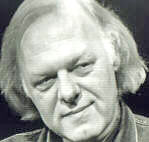
Alan Vaughan
(courtesy Thinking Allowed Productions)
The event, he felt, was part of a
complex archetypal pattern which he was tuned into, involving the
killings of both JFK and Martin Luther King. Many coincidences and
dreams began to support Vaughan’s theory. On April 29 and again on
May 28, Vaughan wrote letters to parapsychologists notifying them of
his premonition and hoping that Kennedy could be warned. His letter
was received by Stanley Krippner at the Maimonides Hospital Medical
Center on the morning of June 4. Subsequently, Vaughan’s apparent
precognitive abilities have been extensively tested.,
Ironically enough, at least three cases are on record regarding the
accidental deaths of parapsychologists who did not heed the warnings
of their psychic subjects.
Perhaps the subjects had not sufficiently
demonstrated their reliability in the past.
Education
Modern American education is oriented toward the cultivation of the
mental abilities charted by Benjamin Bloom et al. in their three
taxonomies of educational goals: cognitive, affective and
psychomotor. Psi functioning has not been included within this
taxonomy. This "cultural vacuum" may have been responsible for the
growth of many cults and organizations claiming to train psi and
other related abilities.
The mainstream educational community has
yet to awaken to the challenge of assessing the need and potential
for parapsychological education within the school system. One area
of obvious potential application and some apparent results is in
special education for the blind.
Some steps toward the evaluation
of popular programs for psi cultivation are found in my second book,
Psi Development Systems.
Creativity in
Art, Literature and Music
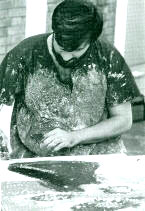
Luiz Gasparetto in
trance ostensibly possessed
by the spirit of Vincent Van Gogh
Trance experience is sometimes
accompanied by artistic production that seems beyond the experience
and talent of the conscious mind. Well-known examples of this
phenomena are the literary productions of the Brazilian spiritist Chico Xavier, the artistic productions of
Luiz Gasparetto (another
Brazilian spiritist) and the classical musical creations of the
English medium, Rosemary Brown.
In each of these cases, mediums
claim that the artistic creations are produced with the aid of
discarnate entities.
Agriculture and Pest Control
The use of magical rituals as an adjunct to agriculture certainly
dates back to prehistoric times. It eventually became formalized in
the Eleusinean mystery religion of ancient Greece. In contemporary
society, some practitioners use "radionics" instruments as devices
for focusing concentration and eliminating pests and disease from
crops. Many anecdotal accounts, such as those of Arthur M. Young,
attest to the success of this method.
Controlled experimental
investigations have not been published.
Athletics and Sports
Anecdotal accounts, collected by Michael Murphy and Rhea White,
suggest peak moments of psychic perception, psychokinesis, and
synchronistic flow are associated with dramatic levels of athletic
performance.
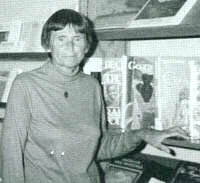
Rhea White
Murphy, founder of the
Esalen Institute
in Big Sur, California, has developed a database suggesting that
athletes develop extraordinary control of the human body -- powers
comparable to that those reported of yogis, mystics and saints.
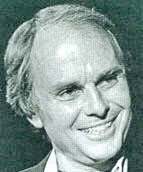
Michael Murphy
(courtesy Thinking Allowed Productions)
Finding Lost Objects
Tribal shamanism, perhaps the world’s second oldest profession,
cultivated practitioners who were noted for their ability to find
lost objects. Adrian Boshier reported that tests for this are a
normal part of shamanistic training in South Africa. An experimental
model for testing this ability in natural situations has been
designed by Patric Geisler, a psi researcher and anthropologist.
Popular advertisements in Fate magazine present many claims of this
ability.
Scientific Discovery
At the beginning of the twentieth century the theosophist
clairvoyant C. W. Leadbeater published a book called
Occult
Chemistry in which he attempted to use psi perception to determine
the structure of molecules. In so doing, he anticipated the
discovery of deuterium, an isotope of hydrogen. Later, similar
attempts were reported by French researcher Z. W. Wolkowski who
conducted successful tests with a sensitive, Raymond Reant.
In the
realm of astronomy, remote viewing experiments have reportedly
provided unexpected data that was later confirmed by satellite
probe. These reports have been very controversial.
Weather
Prediction and Control
The ability to control the weather is reputed to occur among shamans
of many tribal groups and has reportedly been observed in the
American Indian culture as well as the Tibetan. Several ostensible
instances with an American practitioner have also been documented by
myself and are included in the earlier discussions of UFOs and
macro-pk.
Followers of the psychiatrist
Wilhelm Reich claim to have
developed control over the weather through the use of mysterious "cloudbusters"
that are said to manipulate "orgone energy."
Animal
Training and Interspecies Communication
Sir Arthur Grimble, who served as the British resident Commissioner
for the Gilbert and Ellis Islands in the South Pacific, reports
witnessing a scene in which a native shaman entered a dream state in
order to "call porpoises." After a period of time he awoke from his
sleep and announced to the tribe that the porpoises were coming.
The
village of about 1000 individuals rushed down to the beach eagerly
expecting a rare feast, and Grimble documents that he observed an
entire flotilla of porpoises swim onto the beach, passively offering
themselves to the natives:
They were moving toward us in extended order with spaces of two or
three yards between them, as far as the eye could reach. So slowly
they came they seemed to be hung in a trance. It was as if their
single wish was to get to the beach.
The years since the first publication of The Roots of Consciousness
have seen the birth and growth of an international movement to
foster and study new forms of communication between humans and
cetaceans. In 1976, I became a participant-observer of this
movement. An organization, called the
New Frontiers Institute,
operating in a San Francisco suburb had developed some unusual
methods for psychic work akin to travelling clairvoyance occurring
during a mutual hypnotic induction.
Members of the group included a chiropracter, a housewife from Argentina, an astrophysicist, a
psychiatrist and an accountant. I found them to be amiable and was
willing to engage in group hypnotic experiences with them. Several
such sessions ensued.
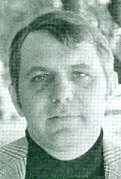
Richard Gierak,
founder of the New Frontiers Institute
During these experiences, after a
lengthy hypnotic induction, we engaged in a form of what might be
called group fantasy -- or if more than fantasy were involved,
perhaps group astral projection, or, if any of this could be
objectively verified, group travelling clairvoyance. Typically, we
would "fly" to the top of the north tower of the Golden Gate Bridge.
After, checking to make sure we were all "there," we would "fly" off
on further adventures-- each of us describing our experiences
verbally to the others.
On one such occasion, we decided to visit Marine World, a Bay Area
wildlife amusement park, to see whether we could communicate with a
dolphin. As the conversation progressed, the following points
emerged:
1) We were with a
female dolphin.
2) She was sick and cantankerous.
4) Her name was "Dee" or began with "D."
5) She was in a separate tank without a mate.
6) She did not wish to cooperate with the
trainers.
7) She wanted us to help her escape.
8) She wanted to travel with us astrally.
The issue of helping a dolphin escape
was not entirely absurd -- as such an instance had recently been
reported in the news. We all felt a great deal of empathy for "Dee,"
but we were not prepared to engage in illegal activities in her
behalf. We offered her another solution.
If this ostensible
communication were real, we would visit "Dee" at Marine World. If we
could somehow objectively demonstrate some type of human-dolphin
telepathic communication, the knowledge of this might provoke other
humans into rethinking our entire relationship with dolphins in a
way that would greatly benefit "Dee" and others of her species.
Meanwhile we would use whatever psychic means we had to help "Dee"
and to heal her.
This particular session had a remarkable quality in terms of both
its vividness and the group coherence. Immediately after awakening
from the group hypnotic experience, we phoned Marine World to see if
they had a dolphin that resembled "Dee." We were, fortunately, put
through to one of the dolphin trainers who told us that there was a
female dolphin who matched our description. Her name was "Dondi."
Intrigued by our story, he invited us to Marine World for a private
visit, to meet Dondi and for some informal testing of our possible
communication with her.
During our first session at Marine World, the trainers had placed
Dondi in a tank with five five other dolphins. We were asked simply
to see if we could identify which of these she was. Five of the six
of our group succeeded in this -- although there was some discussion
among us and these could not be thought of as independent
observations (which would be of relevance for statistical analysis).
The dolphin trainers also told us that, from their own experiences
with these very intelligent animals, they had little doubt of the
possibility of telepathic communication between cetaceans and
humans. In fact, a recent issue of the dolphin trainer’s
professional newsletter had just featured an article about one of
the most honored of their profession, Frank Robson. A New Zealander,
Robson was knighted by Queen Elizabeth for the remarkable work
described in his book Thinking Dolphins -- Talking Whales.
He had
achieved heroic status by saving a pod of whales that had become
stranded on a sandbar in the South Pacific. Robson described this
success, and many other experiences as resulting from a type of
telepathy. Thus the dolphin trainers at Marine World were most
willing to work with the New Frontier Institute group to explore
further the possibility of human-dolphin telepathy.
Over a period of months, members of the group frequented the dolphin
tanks at Marine World, paying particular attention to Dondi. Her
condition improved markedly -- to the point where instead of being
sick, contankerous and uncooperative, she had become the star
performer in Marine World’s dolphin show.
In May of 1977, a pilot attempt was made to assess the effectiveness
of the New Frontiers Institute work with dolphins. The entire
experiment was videotaped. In addition, detailed audiotaped records
of Dondi’s behavior were made by several independent observers
(including myself, on this occasion) and were later transcribed. The
final results were suggestive of the possibility that Dondi was
responsive, over 50% of the time, to telepathic instructions.
Another interspecies explorer, and international organizer of the
movement, is Wade Doak of Whangerei, New Zealand, author of ten
books on natural history and wildlife, including Dolphin Dolphin and
Encounters With Whales and Dolphins.
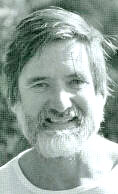
Wade Doak
Doak maintains that his exploration of
interspecies communication began with a simple incident that took
place on his catamaran in the waters off of New Zealand. An American
visitor sitting on the deck suddenly and unexpectedly experienced an
altered state of consciousness which he described as being like "a
pinball machine in my head." Moments later, a dolphin jumped out of
the water within a few feet of the American and looked at him right
in the eye.
That evening, the American reported a strange dream. In the dream,
Wade Doak was in the water surrounded by dolphins who were swimming
about him in a figure-eight pattern. The dolphins were making a
strange noise that sounded like "tepuhi."
Doak was a naturalist and filmmaker by training who had extensively
studied communication patterns among the species inhabiting South
Pacific coral reefs. In his explorations, he had encountered many
exotic forms of communication among the various species -- including
the native, micronesian tribes. He suspected that his friend’s dream
might represent a form of "biological communication" between
humans
and dolphins.
In order to explore this hypothesis further, he visited a shaman of
the New Zealand Maori people. The Maoris call themselves the "people
of the dolphin" and legend has it that their tribes was originally
guided to the New Zealand islands in past ages by the dolphins
themselves. The shaman believed that this dream was not a mere
fantasy. He pointed out that "tepuhi" is the Maori word for the
sound that dolphins make when they blow water from their blowholes.
Pressing matters further, Doak launched an expedition to contact
dolphins in the open waters off New Zealand. He equipped his
catamaran with film equipment. However, no dolphins were sighted for
several weeks. Finally, on one occasion, some dolphins were sighted
in the distance.
Doak jumped into the water and, while underwater, made the sound "tepuhi."
At that moment, his film crew was fortunate enough to capture an
extraordinary event. Circling the boat, dozens of dolphins
simultaneously jumped into the air. Then they swam around Doak in a
figure eight pattern -- a confirmation of the dream communication.
Doak has since spent the intervening years continuing his efforts to
communicate with and even live with dolphins in the open waters.
He
is also the founder of Project Interlock, an informal, international
network of individuals who are engaging in similar experiences.
Intuitive Consensus
The
Center for Applied Intuition was founded by
William Kautz, who
has also been a senior research scientist in the area of mathematics
and computer science at SRI International. He developed a method
called intuitive consensus:
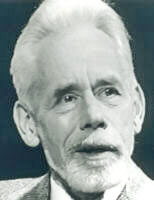
William Kautz
(courtesy Thinking Allowed Productions)
Essentially, the method of intuitive
consensus consists of a careful preparation of the questions to be
answered to eliminate ambiguity and vagueness; posing the questions
independently to a team of four or more ’intuitives,’ followed in
each case by a dialogue until clear and detailed answers are
obtained; then analysis and comparison with one another and existing
knowledge to form a consensus of intuitively derived information.
The team approach permits the occasional errors and discrepancies in
the information provided by individual team members to be almost
completely eliminated. The questioning cycle may be repeated one or
more times in order to resolve ambiguities or contradictions,
usually traceable to erroneous preconceptions or unintended
vagueness in the questions and to otherwise reduce the noise level
in the intuitive communication channel. The final consensus takes
the form of specific hypotheses amenable to test by ordinary
scientific means. In some cases it provides new perspectives and new
ideas about the problem under study.
Actually, the method employed by Kautz is very similar to the
"Delphi method" which is used in future forecasting. In this method,
various experts are questioned about potential future phenomena
which fall under their expertise. The primary difference is that Kautz does not employ intellectual or academic experts; he employs
people whose knowledge is derived from intuitive sources, which may
be taken, in this case, as a possible euphemism for psi sources.
Kautz has been applying this method, under contract, for
various
business and professional organizations. He recently completed a
study for a Japanese research institute on the "Future of Japan." He
has also employed the method to develop scientific hypotheses
related to such unsolved problems as the cause of earthquakes, and
the cause of crib death in infants, as well as technical problems in
genetic engineering.
While the results he has obtained in these studies are not
inconsistent with the possibility of successful ESP functioning, I
am personally not aware of any individual instances of Kautz’ work
which could be put forward as examples of success in this area that
could be attributed to psychic functioning.
Kautz’ approach has been
detailed in two books, co-authored with Melanie Brannon, Channeling
and Intuiting the Future.
Some
Concluding Thoughts About Folklore
There is an ironic boundary separating the worlds of science and
folklore. While folklore, as such, carries little or no scientific
weight; science, without folklore, has little or no real meaning.
This is most evident in looking at the writings of certain critics
of psi research. Such critics will, from time to time, grudgingly
acknowledge that some studies contain statistically anomalous
effects. However, they point out these effects are simply
meaningless statistical correlations pointing to no recognizable
phenomena or principles.
They may be correct, but only in a rigidly limited sense. I believe
they are wrong to eliminate all history and folklore from scientific
consideration. For within the real-life, human context which history
and folklore provide, the seemingly meaningless statistical
correlations of psi research take on a kind of life and color.
In Section II, I have reported some personal experiences which
seemed extraordinary to me: an apparent clairvoyant dream experience
which led to my career in the media, observations of Ted Owens who
attempted to demonstrate that he was half-alien, work with the New
Frontiers Institute in ostensible telepathic communication between
humans and dolphins, observations of Kathlyn Rhea who located a
missing body for the Calaveras County Sheriff. I have been
personally struck by these experiences. Whether I interpret them in
a skeptical manner or as examples of psychic functioning, is a
personal matter.
It is not possible to make a rigorous scientific
case either way, because there were too many uncontrolled variables
in every case.
References
-
Loyd M. Auerbach,
"Psi-fi: Psi in Science Fiction." Applied Psi, 3-4, Spring
1984.
-
Louisa E. Rhine,
PSI. New York: Harper & Row, 1975.
-
Ronald Rose,
Primitive Psychic Power. New York: New American Library,
1956.
-
Joan Halifax-Grof,
"Hex Death," in Alan Angoff & D. Barth (eds.),
Parapsychology and Anthropology: Proceedings of an
International Conference. New York: Parapsychology
Foundation, 1974.
-
Leonid I.
Vasiliev, Experiments in Distant Influence. New York: E. P.
Dutton, 1976.
-
Sun Tzu, The Art
of War, trans. by S. B. Griffith. New York: Oxford
University Press, 1963.
-
Zedenek Rejdak,
"Parapsychology -- War Menace or Total Peace Weapon?" in S.
Ostrander & L. Schroeder (eds.), The ESP Papers: Scientists
Speak Out from Behind the Iron Curtain. New York: Bantam,
1976.
-
J. H. Brennan,
The Occult Reich. New York: New American Library, 1974.
-
C. L. Linedecker,
The Psychic Spy. New York: Doubleday, 1976.
-
Leonid L.
Vasiliev, Experiments in Distant Influence. New York: E. P.
Dutton, 1976.
-
Michael Rossman,
New Age Blues. New York: E. P. Dutton, 1979.
-
E. Read, "In
Vietnam Life Can Depend On a Dowsing Rod," Fate, 21(4),
April 1968, 52-59.
-
SRI report
-
SRI report
-
A letter from
Dr. Ray Hyman reporting his salient observations of Uri
Geller during those meetings refered to the penetrating
"blue eyes" of Uri Geller. Geller’s eyes are brown.
-
Paraphysics
Research and Development -- Warsaw Pact. Defense
Intelligence Agency, Washington, DC, March 30, 1978.
-
Charles T. Tart,
"A Survey of Negative Uses, Government Interest and Funding
of Psi," Psi News, 1(2), 1978, p. 3.
-
Barbara Honegger,
who received an M.S. degree in parapsychology at John F.
Kennedy University, worked in the White House as an
assistant to Martin Anderson, Ronald Reagan’s Domestic
Policy Advisor. She co-authored, with me, a paper titled,
"National Security Implications of Psi," for the Applied Psi
Newsletter, 1(5), Nov-Dec 1982, which is the basis for much
that is reported here of government interest in psi. She has
also recently published a book, October Surprise (New York:
xxxxx, 1989), detailing behind the scenes activities
relating to Iranian arms sales during the Reagan
administration.
-
Robert C. Beck,
"Extreme Low Frequency Magnetic Fields Entrainment: A
Psychotronic Warfare Possibility?" Association for
Humanistic Psychology Newsletter, April 1978.
-
Lt. Col. John B.
Anderson, "The New Mental Battlefield," Military Review,
December 1980, 47-54.
-
Thomas E.
Bearden, Excalibur Briefing. San Francisco: Walnut Hill,
1980.
-
Thomas E.
Bearden, "Soviet Psychotronic Weapons: A Condensed
Background," Specula, March-June 1978.
-
Candice Borland
& G. Landrith, Improved Quality of City Life: Decreased
Crime Rate. MERU Report 7502. Weggis, Switzerland:
Department of Sociology, Center for the Study of Higher
States of Consciousness, Maharishi European Research
University, 1975.
-
M.C. Dillbeck,
T.W. Bauer, & S.I. Seferovich, The Transcendental Meditation
Program as a Predictor of Crime Rate Changes in the Kansas
City Metropolitan Area. Unpublished paper (1978) Available
from the International Center for Scientific Research,
Maharishi International University, Fairfield, Iowa 52556.
-
S. Giles,
"Analysis of Crime Trend in 56 Major U.S. Cities,"
Scientific Research on the Transcendental Meditation
Program: Collected Papers, Vol II. Rheinweiler, West
Germany, nd.
-
G. Hatchard,
Influence of Transcendental Meditation Program on Crime Rate
in Suburban Cleveland, Unpublished paper (1978). Available
from the International Center for Scientific Research,
Maharishi International University, Fairfield, Iowa 52556.
-
G. Landrith, The
Maharishi Effect and Invincibility: Crime, Automobile
Accidents and Fires. Unpublished paper (1978). Available
from the International Center for Scientific Research,
Maharishi International University, Fairfield, Iowa 52556.
-
Franklin D.
Trumpy, "An Investigation of the Reported Effect of
Transcendental Meditation on the Weather," Skeptical
Inquirer, VIII(2), Winter 1983-84, 143-148.
-
Joseph Banks
Rhine, "Some Exploratory Tests in Dowsing," JournaI of
Parapsychology, 14(4), December 1950, 278-286.
-
Kenneth Roberts,
Henry Gross and His Divining Rod. New York: Doubleday, 1951.
-
Kenneth Roberts,
The Seventh Sense. New York: Doubleday, 1953.
-
Kenneth Roberts,
Water Unlimited. New York: Doubleday, 1957.
-
Berthold E.
Schwarz, A Psychiatrist Looks at ESP. New York: New American
Library, 1965. Originally published as Psycho-Dynamics, the
book contains studies of three different psychics.
-
A. G. Bakirov,
"The Geological Possibilities of the Biophysical Method,"
trans. by C. Muromcew & C. Bird, The American Dowser, August
1974, 110-112.
-
A useful
skeptical account of dowsing is Evon Z. Vogt and Ray Hyman,
Water Witching U.S.A. Chicago: University of Chicago Press,
1959.
-
Jonsson,
incidentally, is the same psychic who participated with
astronaut Edgar Mitchell in a less than successful ESP
experiment from outer-space. See Edgar D. Mitchell, "An ESP
Test from Apollo 14," Journal of Parapsychology, 35(2),
1971.
-
"News Ambit,"
Psychic Magazine, December 1974.
-
Ostrander &
Schroeder, Psychic Discoveries Behind the Iron Curtain.
-
In May of 1975,
Lozanov spoke at several conferences of American educators
who are interested in utilizing his techniques.
-
Milan Ryzl, ESP
in the Modern World. San Jose: Milan Ryzl, 1972. Available
from the author, P.O. Box 9459, Westgate Station, San Jose,
Ca. 95117.
-
Frederick Bligh
Bond & T. S. Lea. The Gate of Remembrance: The Story of the
Psychological Experiment Which Resulted in the Discovery of
Edgar Chapel at Glastonbury. 2nd & 4th editions rev. Oxford:
Basil Blackwell, 1918, 1921.
-
J. N. Emerson,
"Intuitive Archeology: A Psychic Approach," New Horizons,
1(3), January 1974.
-
J. N. Emerson,
"Intuitive Archeology: The Argillite Carving," Department of
Anthropology, University of Toronto, March 1974.
-
J. N. Emerson,
"Intuitive Archeology: A Developing Approach," Department of
Anthropology, University of Toronto, November 1974.
-
Chris Bird &
Jeffrey Mishlove, "Soviet Parapsychology," Mindspace radio
broadcast, May 1975.
-
Stephen A.
Schwartz, The Secret Vaults of Time. New York: Grosset &
Dunlap, 1978.
-
Stephen A.
Schwartz & H. E. Edgerton, A Preliminary Survey of the
Eastern Harbour, Alexandria, Egypt, Combining both Technical
and Extended Sensing Remote Sensor Exploration. Los Angeles:
The Mobius Group, 1980.
-
Stephan A.
Schwartz & Rand de Mattei, "The Discovery of an American
Brig: Fieldwork Involving Applied Archaeological Remote
Viewing," in Linda A. Henkel & Rick E. Berger (eds.),
Research in Parapsychology 1988. Metuchen, NJ: Scarecrow
Press, 1989.
-
A major critic
of this report has been Keith Harary, a psi researcher who
has served as a Mobius respondent.
-
Paul Tabori,
Crime and the Occult. New York: Taplinger, 1974.
-
Ibid.
-
Ibid.
-
M. B. Dykshorn &
Russell H. Felton, My Passport Says Clairvoyant. New York:
Hawthorne, 1974.
-
"Interview:
Irene Hughes," Psychic Magazine, December 1971.
-
Tabori, op. cit.
-
Ibid.
-
Piet Hein
Hoebens, "Gerard Croiset: Investigation of the Mozart of
’Psychic Sleuths’ -- Part I," Skeptical Inquirer, VI(1),
Fall 1981, 17-28
-
Piet Hein
Hoebens, "Croiset and Professor Tenheaff: Discrepancies in
Claims of Clairvoyance," Skeptical Inquirer, VI(2), Winter
1981-2, 32-40.
-
Kathlyn Rhea,
Mind Sense. Berkeley, CA: Celestial Arts, 1988.
-
Kathlyn Rhea,
The Psychic is You (2nd edition). Berkeley, CA: Celestial
Arts, 1988.
-
Pat Michaels,
"Pat Michaels, Clairvoyant Newsman," Fate, August 1966,
442-53.
-
William H. Kautz,
"Rosemary Case of Alleged Egyptian Xenoglossy," Theta,
10(2), 1982, 26-30.
-
Jeffrey Goodman,
Psychic Archeology. New York: G. P. Putnam, 1977.
-
Douglas Dean,
John Mihalsky, Shiela Ostrander & Lynn Schroeder, Executive
ESP. Englewood Cliffs, New Jersey: Prentice-Hall, 1974.
-
Eric Mishara,
"Psychic Stock Market Analyst," Omni, February 1983.
-
Uri Geller & Guy
Lyon Playfair, The Geller Effect. New York: Henry Holt,
1986.
-
J. Cook,
"Closing the Psychic Gap," Forbes, 1984, 133, 12, 90-95.
-
Ibid.
-
J. C. Barker,
"Premonitions of the Aberfan Disaster," Journal of the
Society for Psychical Research, 44, 1967, 169-180.
-
E. W. CBx,
"Precognition: An Analysis, I," Journal of the American
Society for Psychical Research, 50, 1956, 47-58.
-
E. W. Cox,
"Precognition: An Analysis, II," Journal of the American
Society for Psychical Research, 50, 1956, 97-107.
-
Alan Vaughan,
"Applying Precognition to Space Systems," Applied Psi
Newsletter, 1(2), May/June 1982, 1-6.
-
Alan Vaughan,
Patterns of Prophecy. New York: Hawthorne, 1973, 37-55.
Vaughan is also a researcher and theorist. His book provides
a detailed discussion of the archetypal patterns of time.
-
For an
interesting research study involving Vaughan and his
students, see Gertrude R. Schmeidler & J. Goldberg,
"Evidence for Selective Telepathy in Group Psychometry," in
W. G. Roll, R. L. Morris & J. D. Morris (eds.), Research in
Parapsychology 1973. Metuchen, NJ: Scarecrow Press, 1974.
-
For a skeptical
account of Alan Vaughan’s abilities, see James Randi, "’Superpsychic’
Vaughan: Claims Versus the Record," Skeptical Inquirer,
V(4), Summer 1981, 19-21.
-
Ibid., pp.
66-69, 101-102.
-
Carol Liaros, "Psi
Faculties in the Blind," Parapsychology Review, 5(6),
November-December 1974, 25-26.
-
Yvonne Duplessis,
The Paranormal Perception of Color. New York: Parapsychology
Foundation, 1975.
-
Jeffrey Mishlove,
Psi Development Systems. New York: Ballantine, 1988.
-
W. V. Rauscher,
"Beethoven Lives Through Rosemary Brown," In Marton Ebon
(Ed.), The Psychic Scene. New York: New American Library,
1974, pp. 140-150.
-
E. W. Russell, "Radionics
-- Science of the Future," in John White & Stanley Krippner
(eds.), Future Science. New York: Anchor Books, 1977.
-
Michael Murphy &
Rhea A. White, The Psychic Side of Sports. Reading, MA:
Addison-Wesley, 1979.
-
Michael Murphy,
Transforming the Human Body (#S320). Videotape available
from Thinking Allowed Productions, 2560 9th Street, #123,
Berkeley, CA 94710.
-
Patric V.
Geisler, "Parapsychological Anthropology: Multi-Method
Approaches to the Study of Psi in the Field Setting," in W.
G. Roll, J. Beloff, & R. A. White (eds.), Research in
Parapsychology 1982. Metuchen, NJ: Scarecrow Press, 1983,
pp. 241-244.
-
Annie Besant &
C. W. Leadbeater, Occult Chemistry. London: Theosophical
Publishing House, 1919.
-
Z. W. Wolkowski,
"A Case of Apparent Direct Observation of Matter at the
Molecular and Sub-Atomic Level," Proceedings of the Second
International Congress on Psychotronic Research, 1975, Monte
Carlo, pp. 288-290.
-
Janet Mitchell,
"A Psychic Probe of the Planet Mercury," Psychic, 6(3),
May/June 1975, 16-21.
-
Jeffrey Mishlove,
Preliminary Investigation of Events which Suggest the
Applied Psi Abilities of Mr. Ted Owens. San Francisco:
Washington Research Center, 1977, 1978.
-
T. J. Constable,
"Orgone Energy Weather Engineering Through the Cloudbuster,"
in John White & Stanley Krippner (eds.), Future Science. New
York: Anchor Press, 1977.
-
Sir Arthur
Grimble, We Chose the Islands. New York: William Morrow,
1952.
-
Dr. Charles Tart
(who at that time served on my Ph.D. advisory committee in
Berkeley) described a similar state in an article titled,
"Mutual Hypnotic Induction," published in his classic
anthology, Altered States of Consciousness, New York:
Doubleday, 1971.
-
Wade Doak,
Dolphin Dolphin. New York: Sheridan House, 1988. While this
most interesting book, and others by Doak, may be hard to
find in bookstores, they can be ordered directly from the
publisher at 146 Palisades, Dobbs Ferry, New York.
-
Wade Doak,
Encounters with Whales & Dolphins. Auckland: Hodder &
Stoughton, 1988.
-
William H. Kautz,
Intuitive Consensus: A Novel Approach to the Solution of
Difficult Scientific and Technical Problems. Brochure
published by the
Center for Applied Intuition.
-
Published in San
Francisco by Harper & Row in 1987 & 1989 respectively.
-
E. G. Boring,
"The Present Status of Parapsychology," American Scientist,
43, 1955, 108-116.
-
P. W. Bridgeman,
"Probability, Logic and ESP," Science, 123, 1956, 15-17.
|


















